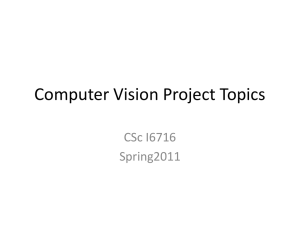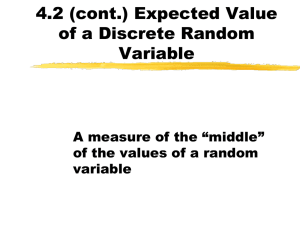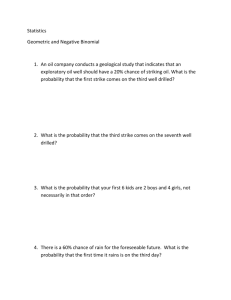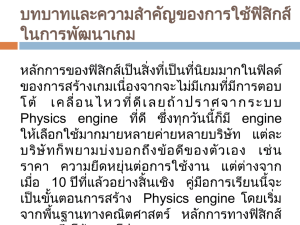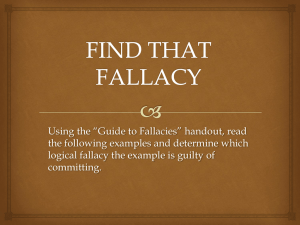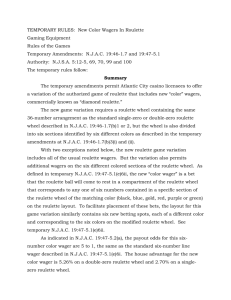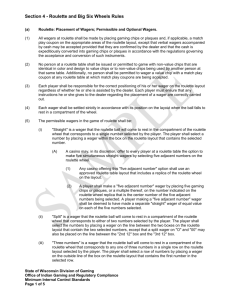Philip Graf - Campaign for Fairer Gambling
advertisement
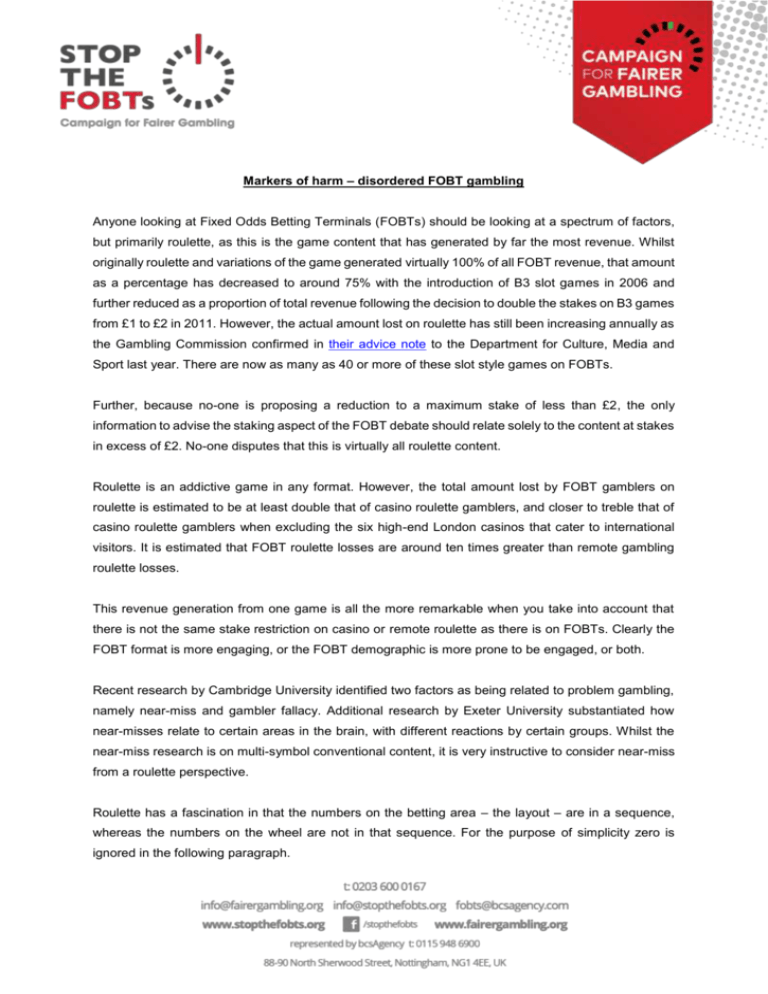
Markers of harm – disordered FOBT gambling Anyone looking at Fixed Odds Betting Terminals (FOBTs) should be looking at a spectrum of factors, but primarily roulette, as this is the game content that has generated by far the most revenue. Whilst originally roulette and variations of the game generated virtually 100% of all FOBT revenue, that amount as a percentage has decreased to around 75% with the introduction of B3 slot games in 2006 and further reduced as a proportion of total revenue following the decision to double the stakes on B3 games from £1 to £2 in 2011. However, the actual amount lost on roulette has still been increasing annually as the Gambling Commission confirmed in their advice note to the Department for Culture, Media and Sport last year. There are now as many as 40 or more of these slot style games on FOBTs. Further, because no-one is proposing a reduction to a maximum stake of less than £2, the only information to advise the staking aspect of the FOBT debate should relate solely to the content at stakes in excess of £2. No-one disputes that this is virtually all roulette content. Roulette is an addictive game in any format. However, the total amount lost by FOBT gamblers on roulette is estimated to be at least double that of casino roulette gamblers, and closer to treble that of casino roulette gamblers when excluding the six high-end London casinos that cater to international visitors. It is estimated that FOBT roulette losses are around ten times greater than remote gambling roulette losses. This revenue generation from one game is all the more remarkable when you take into account that there is not the same stake restriction on casino or remote roulette as there is on FOBTs. Clearly the FOBT format is more engaging, or the FOBT demographic is more prone to be engaged, or both. Recent research by Cambridge University identified two factors as being related to problem gambling, namely near-miss and gambler fallacy. Additional research by Exeter University substantiated how near-misses relate to certain areas in the brain, with different reactions by certain groups. Whilst the near-miss research is on multi-symbol conventional content, it is very instructive to consider near-miss from a roulette perspective. Roulette has a fascination in that the numbers on the betting area – the layout – are in a sequence, whereas the numbers on the wheel are not in that sequence. For the purpose of simplicity zero is ignored in the following paragraph. Betting on the layout selecting numbers 5, 14, 23 and 32 results in all numbers being adjacent to the selected numbers, if diagonal corner contact is included. Betting on any 12 number sequence on the wheel with two numbers between each number means that any number is only one-off. Therefore any roulette gambler betting 25% to 33% of the numbers, a common pattern, will virtually always have a perception of a miss by one number, using the combined layout and wheel configuration to support this perception. The spin of the ball and the wheel also creates a perception of likely results other than the final result. This is particularly so on the FOBT visual. In respect of the gambler fallacy theory, this relates to gamblers incorrectly thinking that past events influence future events in random chance games. Roulette incorporates a display of previous numbers to help encourage this fallacy and increase engagement in the game. Another fascinating aspect of roulette is that each extra number bet is a bet against the other bets. In a horse race the majority of regular gamblers would only bet on one horse to win. But at roulette virtually no-one ever bets just one number. Many regular roulette gamblers bet 19 or more of the 37 numbers. Whilst betting an even money shot of 18 numbers by choosing one of red/black or odd/even or high/low is rational, it is irrational to select 19 or more individual numbers. The following questions apply to roulette in any format, but the questions regarding faster pace are very relevant to FOBTs, which operate several times faster than casino table game roulette. 1. Does roulette at any stake level induce near-miss perceptions? 2. Does roulette at any stake level encourage gambler fallacy perceptions? 3. Does a trade-up in the amount of numbers bet at roulette impact the near-miss perception? 4. Does a trade-up of increased roulette stakes impact the gambler fallacy perception? 5. Does a faster pace of roulette increase near-miss and gambler fallacy perceptions? 6. Does a faster pace combined with trade-ups multiply near-miss and gambler fallacy perceptions? Based on these insights, researchers could ask FOBT gamblers these questions, or questions based on the above. There are additional behaviour questions that could be incorporated into FOBT research. There is minimal likelihood of machine data being able to address many of these points.
